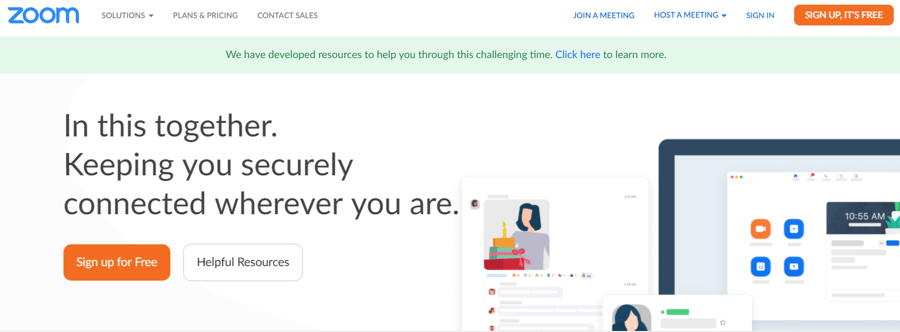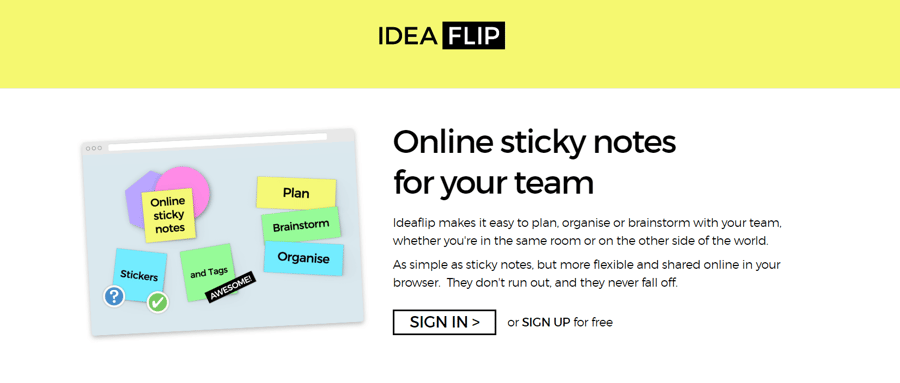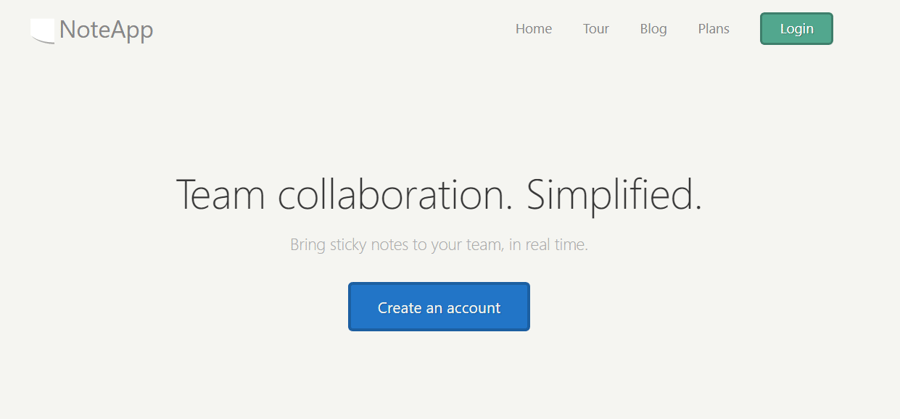
Once a time and money saver that millennials pushed on larger companies and older managers, virtual meetings have become more than convenient; they’ve become downright necessary. With stay-at-home orders, quarantines, and more companies looking for ways to minimize contact between employees, virtual meetings have become a staple, with the once frowned-upon technology being embraced by the masses.
Capable of connecting people locally and globally, virtual meetings are how companies are continuing to operate. And the benefits that come with them (the same ones millennials touted years ago) are hard to ignore.
But, with more businesses and companies leveraging virtual meetings on a regular basis, it’s important to remember that not all online meetings are equal. In fact, some are far better (more effective, more engaging, more useful) than others.
Why?
Because these virtual meetings understand that successful online meetings require a different environment, mindset, and toolkit than what is necessitated by face-to-face meetings. By adding secondary virtual meeting software, in addition to recognizing the advantages and disadvantages of meeting online, these companies and leaders are showing everyone else how to do virtual meetings the right way — and not just for the “time being.”
Virtual meetings are 100% here to stay, which means figuring out how they work and what you need to be successful is vital in order for your business or organization to keep operating at its best.
The Advantages and Disadvantages of Virtual Meetings
While setting up or joining a virtual meeting isn’t difficult to do (all you need is Internet, audio, and video), ensuring that your meeting is successful requires a little bit more know-how than that. To start, it’s a good idea to understand what virtual meetings can and can’t do, as well as the problems they present for anyone who attends.
When your team receives an invitation to a virtual meeting, there are several things going through their head, including all of those not-so great thoughts, including:
- "I have so much going on today! How can I stop what I’m doing and focus on this meeting?"
- "Don’t they know we have more important stuff that needs to get done?"
- "Why do I have to attend the meeting? What am I really supposed to be doing when I join?"
- I never have a chance to talk during these meetings. So what’s the point?"
To help avoid your team dreading your virtual meeting, and to make sure you’re doing everything you can to host a successful (and useful) meeting, here are five simple steps that can help keep everyone focused, engaged, and on the same page.
5 Steps to a Successful Virtual Meeting
1. Stay focused on the purpose of your meeting.
Having a meeting just for the sake of meeting is never a good idea, even if it’s just in person. Sure, other topics are bound to come up when you meet with your team — and that can be great! But not having a real focus can make your meetings feel chaotic and lengthy, especially when they’re virtual.
By knowing what your intention for the meeting is, you can set expectations appropriately. You can also prep for the meeting, selecting the tools you need to best meet your goals. For example, if you want your team to actively collaborate during your virtual meeting, you’ll want to leverage secondary tech tools, like mind-maps and visual notes, to facilitate this.
2. Set expectations for your meeting.
A lot of virtual meeting facilitators walk away from a meeting feeling disappointed. And, to be honest, a lot of attendees feel the same way. A big reason for this is that there are no clear expectations set prior to the meeting.
For example, if you want everyone who attends to engage, make it clear that they need to be in an environment where they don’t have to be muted. Even setting dress code expectations can help. You’ll also want to be clear about the kind of behavior you want to see during the virtual meeting. If obvious distractions, like texting or getting up in the middle of the meeting, aren’t going to fly, make sure your attendees know.
One of the biggest problems with virtual meetings is that people don’t feel connected. And, when they feel invisible, they don’t realize that they can’t do certain things — like show up in pajamas, eat lunch, or just clearly not be paying attention. Set your expectations clearly and in the beginning so that there is no confusion.
3. Help attendees feel heard with a Team Facilitator.
Virtual meetings can leave some team members feeling invisible, which is why assigning someone to the role of Team Facilitator can be a game changer. This facilitator is responsible for making sure that the conversation stays on track, people aren’t interrupted, and that everyone who wanted to say something gets a chance. This individual can also help create a healthy environment for virtual meetings by suggesting short breaks for long meetings and by being the voice for attendees.
4. Increase involvement with specific assignments.
To help attendees understand what their role is during a virtual meeting, it can be a good idea to assign other roles, too. Giving people responsibilities, like being the timekeeper, notetaker, or tech support expert, increases involvement and helps to keep virtual meetings running smoothly. From staying on schedule to organizing questions, notes, and big takeaways for everyone to review, these roles help to guide the meeting and everyone who’s in it.
5. Do a “dry-run” with all technology to avoid major issues.
The more familiar you are with the tech you’re using, the better your virtual meeting will be. Period. If tech isn’t your best friend, this is where a tech support expert on your team can help. They can help get everything up and running and troubleshoot quickly during a meeting if something does go wrong.
Best Virtual Meeting Tools
1. Zoom

One of the most popular online communication software tools, Zoom does a great job at providing excellent video meetings at a price that works for almost everyone. From free to more expensive monthly fees for bigger companies needing more options, Zoom is quickly becoming the software of choice for virtual meetings to take place. Just be sure all attendees know that they need to download the app before they can take part in your meeting.
2. Join.Me

An excellent option for virtual meetings and screen sharing, Join.Me gives you the option to have a personalized URL, as well as other custom details, like backgrounds. More importantly, Join.Me helps attendees engage with each other thanks to its unique whiteboard feature.
3. GoToMeeting

Although Zoom is skyrocketing to the forefront of virtual meetings, GoToMeeting has been around even longer. Yes, you’ll pay a fee to use the tool, but there’s no cap on the number of meetings you can have. The only issue GoToMeeting hasn’t quite figured out is how to make downloading the app easy. Right now, the process continues to be somewhat cumbersome.
4. Slack

Slack keeps everyone on your team in touch, which is why so many virtual meetings depend on it. Not only can it be a great place to remind attendees of meetings, but it also allows for easy communication between teams during and post-meetings. This makes it even easier to take action on anything that’s discussed. For small teams, slack is available for free. For larger teams, there is a per person rate charged each month, but the cost is minimal for the convenience the tool delivers.
5. Asana

When it comes time to assign projects and keep track of who’s doing what, Asana is a great online tool to leverage. If your team is smaller than 15 people, it’s completely free to use, making it the perfect gathering place for your team to stay organized and in touch.
6. IdeaFlip

An incredible piece of software designed for mind-mapping, IdeaFlip allows your team to brainstorm both before, during, and after virtual meetings. IdeaFlip boards can be shared and viewed by anyone, even if they don’t personally have an account.
7. NoteApp

Virtual meetings can become even more engaging when you use NoteApp, which is a visual collaboration tool that creates digital “sticky notes” that can be arranged on various boards. Customization options allow these boards to feel branded, which can be nice if fewer people are actually in a physical office space.
8. Bloomfire

Another mind-mapping software, Bloomfire is great because any of the content that’s created inside of it can be searched, making it easy for meeting attendees and team members to find what they’re looking for quickly. You can also create categories so that your boards and content become even more convenient to reference.
Conclusion
Hosting a virtual meeting can be everything physical meetings offer in almost every case. And, sometimes, virtual meetings can be even better. The more familiar you become with them now, and the better you’re able to use them, the faster your business or company will be able to adapt, which means your competition will be the ones left playing catch up — not you.





Leave a reply or comment below